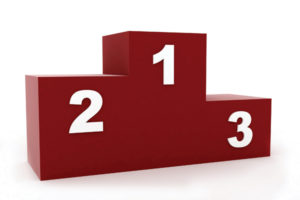The competitions in Markxman are set up simply.
When creating a competition, you choose how many rounds the competition consists of. In practice, this is the number of evenings or days it takes. In addition, you indicate how many turns are shot per round (the number of shooting cards) and how many shots there are per turn.
Competition score
It is assumed that all shooting cards have a count of 0 to 10, so that a maximum of 10 points can be achieved per shot. The maximum score per turn is therefore the number of shots * 10.
Classification
When choosing to classify, the highest 25% of the turns are counted with a minimum of 5 turns. The average of these turns is divided by the number of shots per turn, leaving an average score per shot between 0 and 10.
The number before the decimal point determines the main classification:
Table 1: main classification
| Score | League Score |
|---|---|
| 9 or 10 | A |
| 8 | B |
| 7 | C |
| 6 | D |
| rest | E |
If there are more than 50 participants, a sub-classification will follow based on the number after the decimal point:
Table 2: subclassification (50-100 participants)
| Score | Sub Class |
|---|---|
| ,5 to ,9 | 1 |
| ,0 to 0,4 | 2 |
The classification can therefore end up at A1, A2, B1, B2, C1 etc.
If there are more than 100 participants, the sub-classification is as follows:
Table 3: subclassification (more than 100 participants)
| Score | Sub Class |
|---|---|
| ,7 to ,9 | A |
| ,4 to ,6 | B |
| ,0 to 0,3 | C |
This results in classifications such as AA, AC, BA, BC, EC, etc.
Calculation example
Elsa competed with 58 other shooters in a 20-round pistol competition. There were 3 turns per round and 13 shots per turn.
In total that is 203 = 60 turns (scores). Of these, the highest 25% count, so 15 scores. A maximum of 1310 = 130 can be scored per turn (card).
Elsa’s average across 15 scores is 112. Divided by the number of shots per turn, this gives an average per shot of 112/13 = 8.6
Based on table 1, the main score is : B
Because there were more than 50 participants, a subclassification according to table 2 is also applied.
Elsa’s final ranking for this competition is therefore: B1

